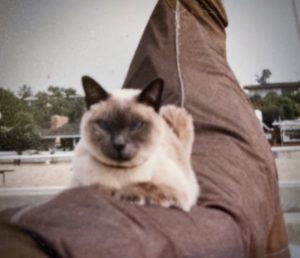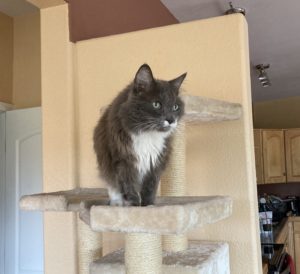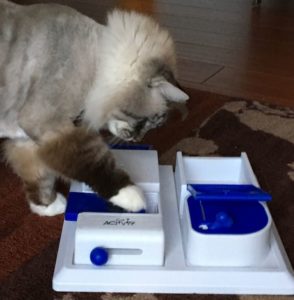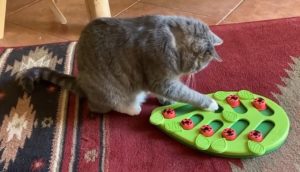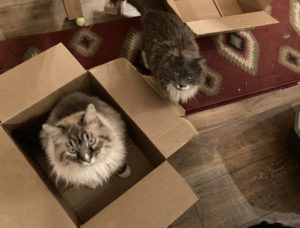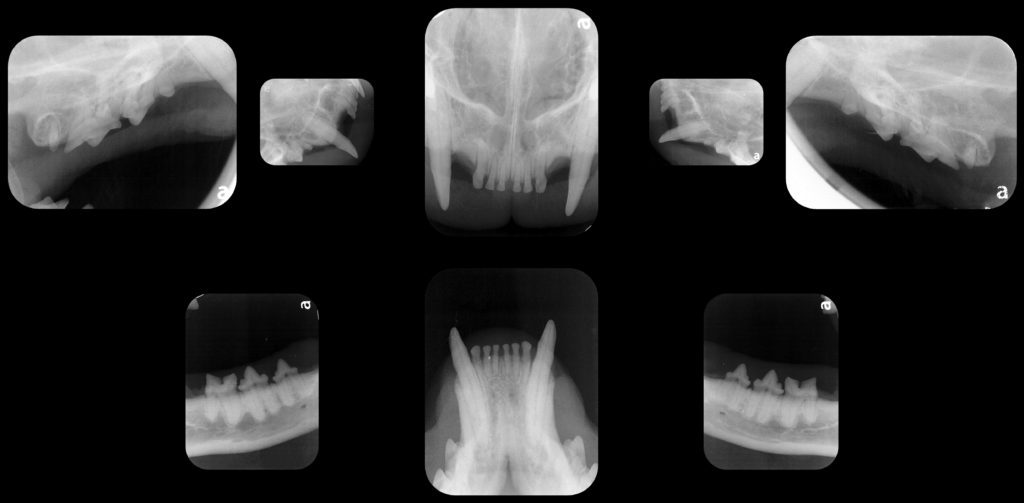
We humans typically have our teeth professionally cleaned once or twice a year. An annual professional cleaning is also essential to your cat’s health. But what about home dental care – what about brushing your cat’s teeth? And how do you go about doing it?
What’s in your cat’s mouth
Cats have 30 teeth. These teeth are designed
- to hold on to prey
- to slash and tear like steak knives.
What’s up front: Canines and incisors
The large “fang” teeth help hold on to a prey animal and “anchor” the jaws to deliver the “killing bite”. The smaller teeth between the fangs (the incisors) help hold prey but your cat also uses them while grooming – you may see your cat stop and “chew” with those front teeth to remove things from her fur or break up fur that is clumped together due to dirt and oil.
What’s Behind the Fangs: Premolars and Molars
Cats typically prey on mice, sometimes squirrels and rabbits. You will see the cat tilt his head as he chews on his prey. The premolars and lower molars help slash and tear up the mouse or squirrel into pieces the cat can swallow. Unlike human molar teeth, these pointy teeth do not have flat surfaces for grinding and chewing food.
Home Dental Care: Brushing Your Cat’s Teeth
Regular brushing reduces the amount of bacteria in the mouth and helps remove plaque, the bacteria-laden film that forms on the teeth and hardens to tartar in 72 hours. Cats, like humans, are also susceptible to the bacteria in plaque that migrate into blood vessels after infecting the gingiva or gums. Once in the bloodstream, the bacteria can effect major organ systems such as the heart and kidneys.
Brushing Your Cat’s Teeth: what you need
- Pet specific toothpaste: The VOHC (Veterinary Oral Health Council) recommends the PetSmile brand,that works by dissolving the bio-film that forms on your cat’s teeth with hydrogen peroxide. Virbac CET enzymatic toothpaste contains lactoperoxidase, and is designed to boost a naturally occurring anti-bacterial process in the saliva. These toothpastes do not contain fluoride and can be swallowed.
- Toothbrush: There are a number of pet toothbrushes available. You may need some trial and error to find the one that works for your cat.
Although there are videos on the Internet showing cats having their teeth brushed with electric human toothbrushes, most cats will prefer a manual toothbrush. Human toothbrushes are designed for much larger teeth.
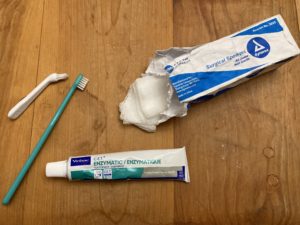
Brushing Your Cat’s Teeth: Where to brush
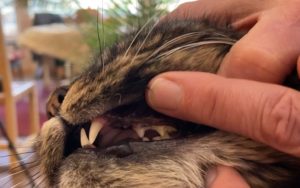 Plaque and tartar tend to accumulate on the buccal (facing the lips) side of the cat’s upper premolars. Focus on these surfaces.
Plaque and tartar tend to accumulate on the buccal (facing the lips) side of the cat’s upper premolars. Focus on these surfaces.
Your cat’s tongue has backward-facing barbs on it to help remove tissue from prey by licking. We don’t often see tartar on the inside surfaces of cats’ teeth during a professional, anesthetized cleaning. The barbs on the tongue may act like a brush, reducing tartar buildup.
Four Steps to Brushing Your Cat’s Teeth
- Accustom your cat to having his head handled. Rub his chin with one hand and gently hold his head with your other hand. Your thumb will be on his cheekbone, your second and third fingers betw
 een his ears and your 4th and 5th fingers on his opposite cheekbone. Hold briefly, then reward him with a treat.
een his ears and your 4th and 5th fingers on his opposite cheekbone. Hold briefly, then reward him with a treat. - Once your cat is comfortable with you handling his head, introduce him to the toothpaste. Let him lick this off your finger.
- The next step is to rub some toothpaste on his upper premolars with your finger while you hold his head and lift his upper lip. Make sure to reward him.
- Introduce the toothbrush. Focus on those upper premolars. Press lightly as if you are “coloring” a picture. Use a back and forth motion. Finish up with a reward!
My Cat Won’t Use a Toothbrush
If you can get through steps 1-3, your cat will still get some benefit. A recent study by Watanabe and colleagues found simply applying the Virbac toothpaste to the teeth reduced plaque, although not as much as brushing did.
Another way to clean teeth without a toothbrush uses gauze squares. The toothpaste is applied to the gauze and the teeth and gums are rubbed lightly with these “toothpasted” squares. There are also purpose-made cleaning wipes for dogs and cats.
Dr. Melissa Guillory, a former feline vet turned dentist, has a few tips for brushing your cat’s teeth:
- Brushing seems to work best when instituted at a young age.
- It’s nice to get the lingual (tongue) surfaces [of the teeth] but buccal (cheek) surfaces are most important – that’s where the most plaque and calculus accumulate.
- Use a pet specific toothpaste (fluoride can cause GI upset)
- It only takes 72 hours for calculus to form so daily brushing or every other day is best 🙂
A yearly professional dental cleaning under anesthesia with x-rays is essential to your cat’s health. Between cleanings, keep brushing your cat’s teeth to maintain her dental health.
Want to keep up with the world of cats? Subscribe to The Feline Purrspective!

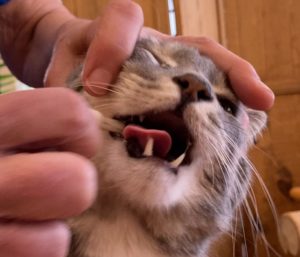 een his ears and your 4th and 5th fingers on his opposite cheekbone. Hold briefly, then reward him with a treat.
een his ears and your 4th and 5th fingers on his opposite cheekbone. Hold briefly, then reward him with a treat.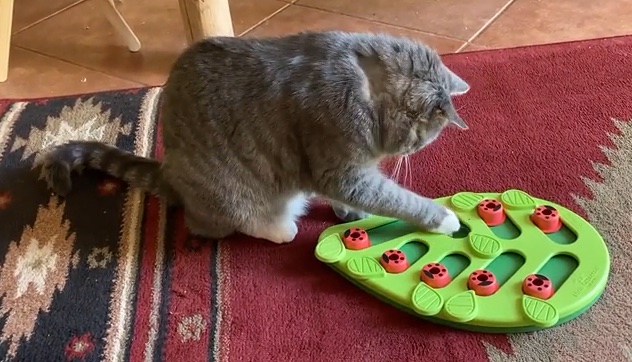 Why slide a block aside to uncover food when there is food freely available in a bowl nearby? Psychologists call the behavior “
Why slide a block aside to uncover food when there is food freely available in a bowl nearby? Psychologists call the behavior “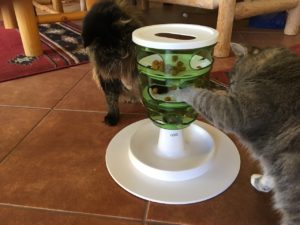
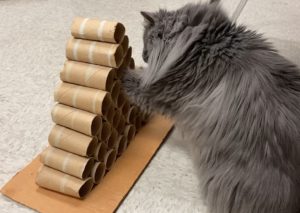
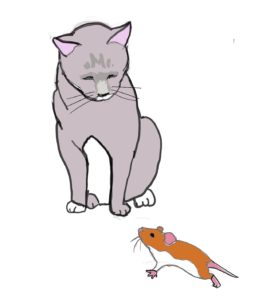 If you search for “monoclonal antibodies”, most of the search results are about COVID-19 and its variants. But did you know that monoclonal antibodies form the basis of the newest treatment for arthritis in cats? This new treatment is called
If you search for “monoclonal antibodies”, most of the search results are about COVID-19 and its variants. But did you know that monoclonal antibodies form the basis of the newest treatment for arthritis in cats? This new treatment is called 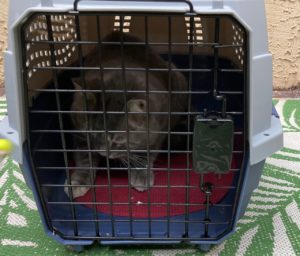 Many of us (cat owners) dread taking our cat to the vet. There is the ordeal of the carrier and car trip; once there, your cat seems miserable. However, regular veterinary care is the key to a happy and longer life for your cat. Can medication before your cat’s vet visit help?
Many of us (cat owners) dread taking our cat to the vet. There is the ordeal of the carrier and car trip; once there, your cat seems miserable. However, regular veterinary care is the key to a happy and longer life for your cat. Can medication before your cat’s vet visit help?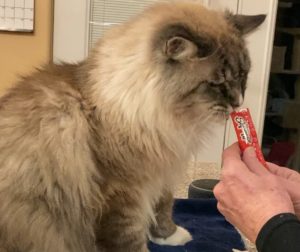 Giving your cat a pill can be a challenge for many cat owners. Often, the pills are bitter or seem too big. The veterinary staff demonstrates the technique but when you get home, you end up with a cat under the bed and the pill on the floor!
Giving your cat a pill can be a challenge for many cat owners. Often, the pills are bitter or seem too big. The veterinary staff demonstrates the technique but when you get home, you end up with a cat under the bed and the pill on the floor!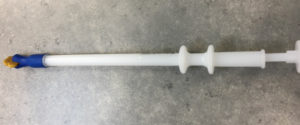
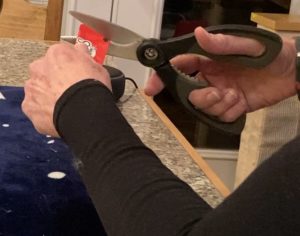
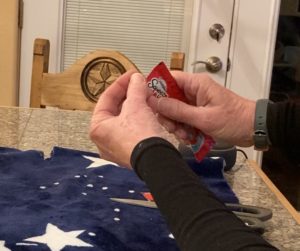
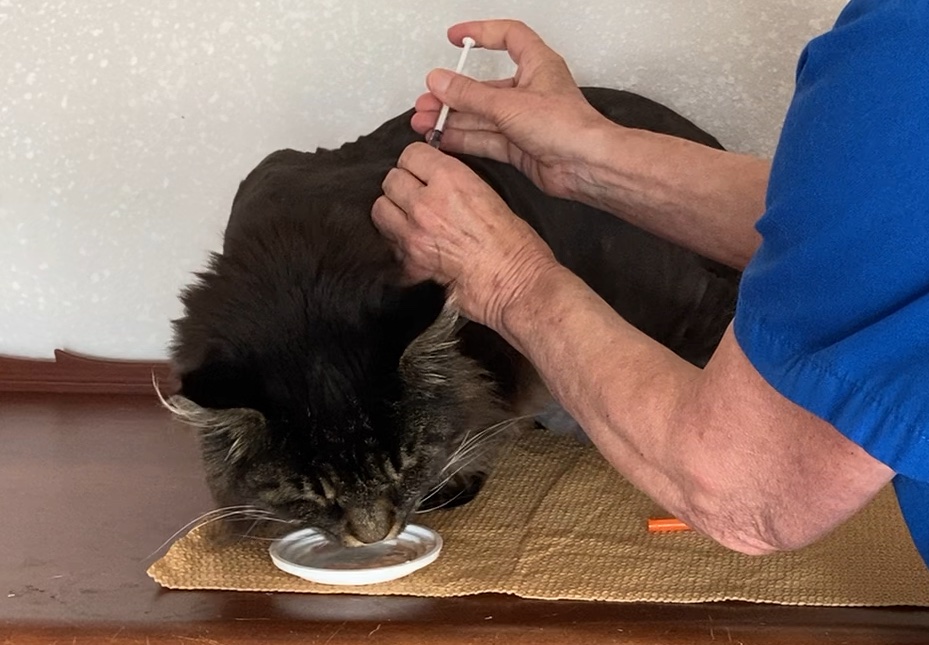
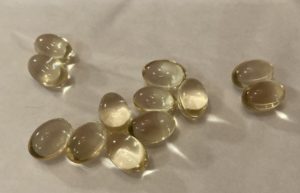 Supplementation with fish oils has shown some benefit for arthritic cats.
Supplementation with fish oils has shown some benefit for arthritic cats. 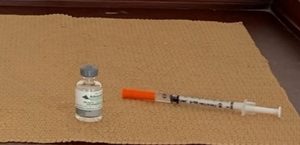
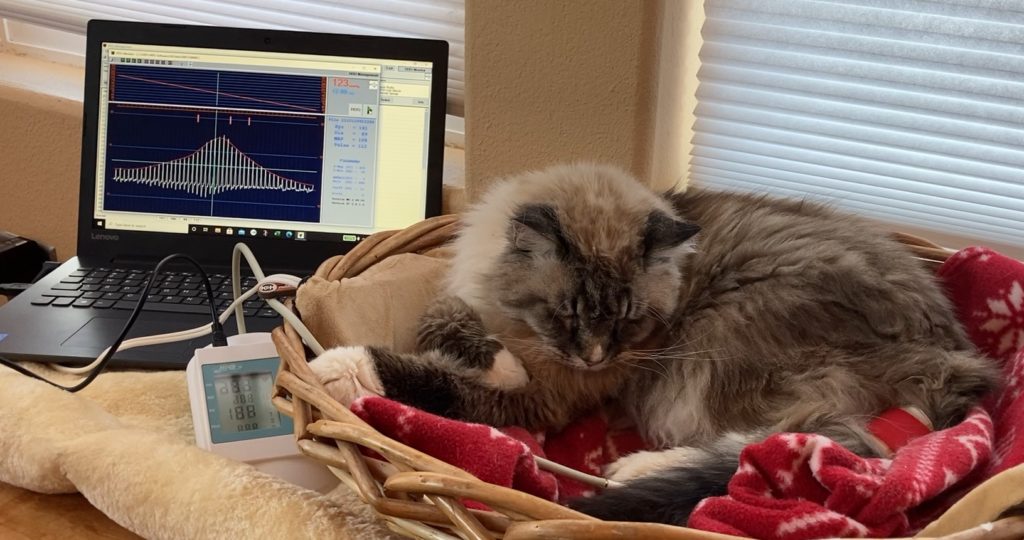
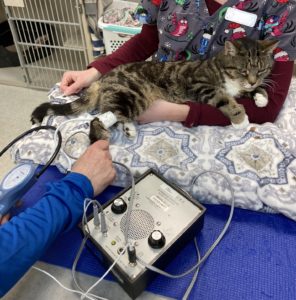

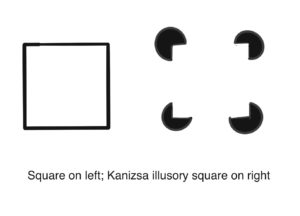 It is not surprising that cats in taped squares became the subject of a research study investigating
It is not surprising that cats in taped squares became the subject of a research study investigating 